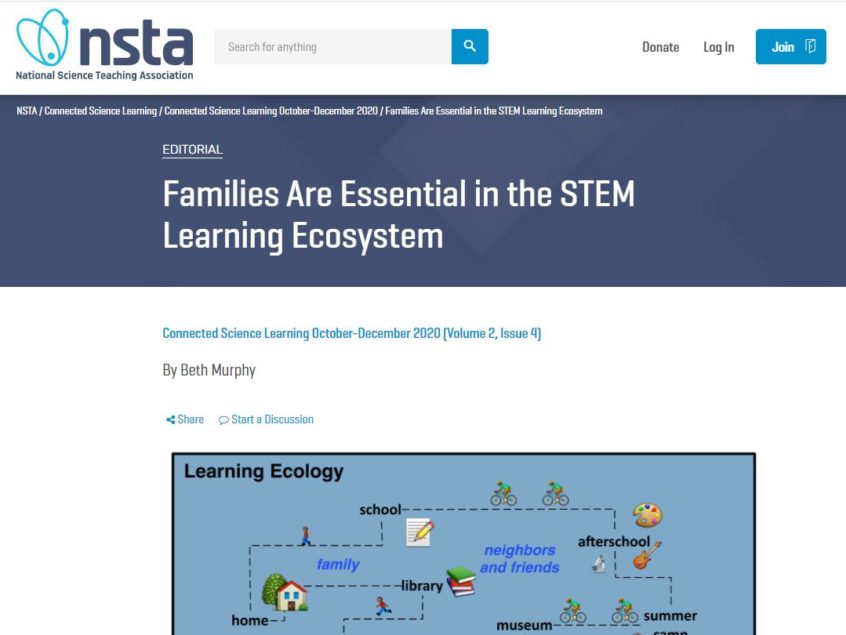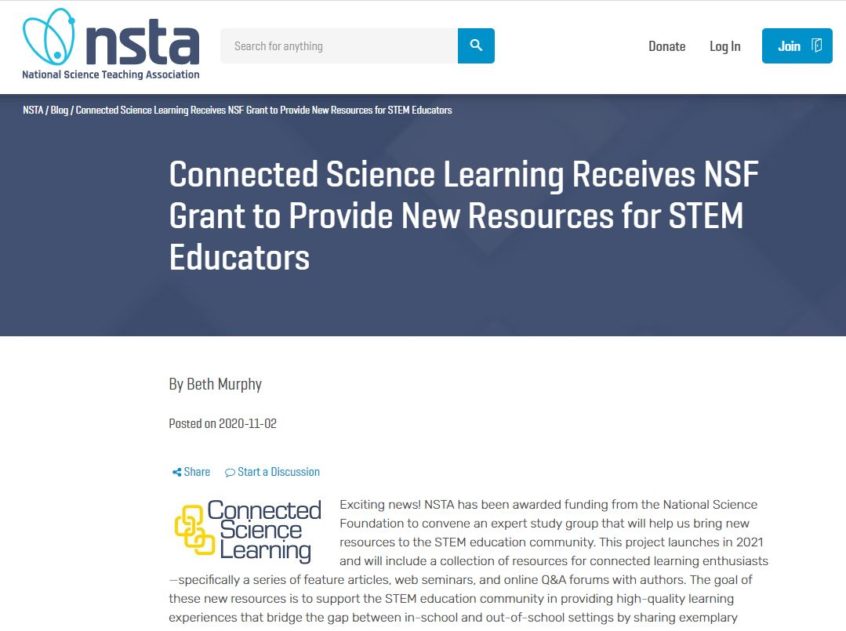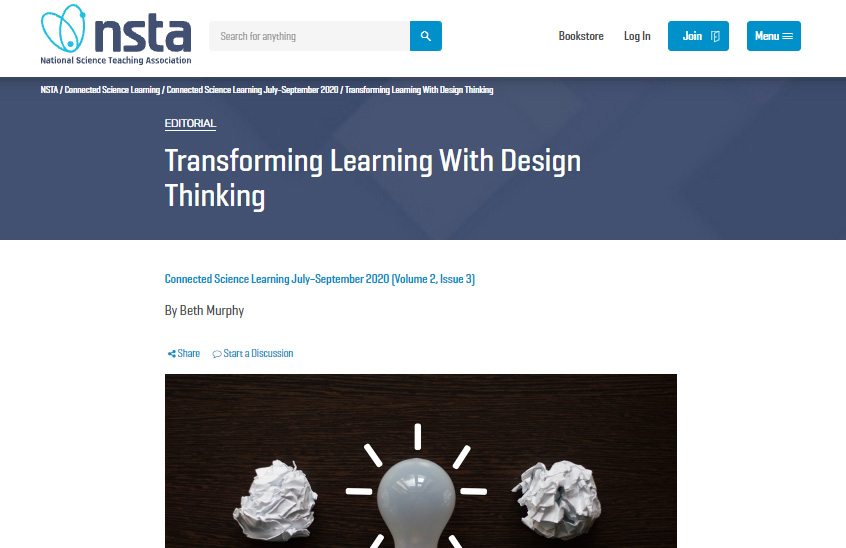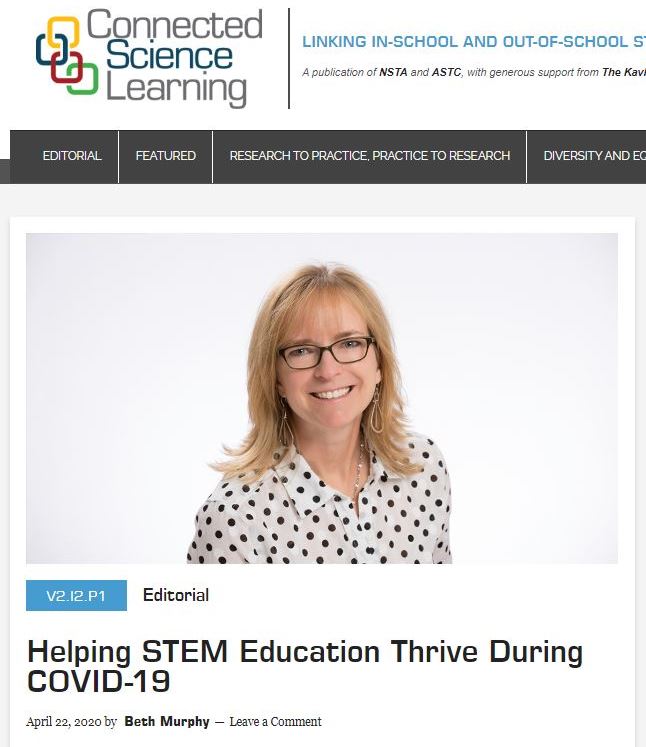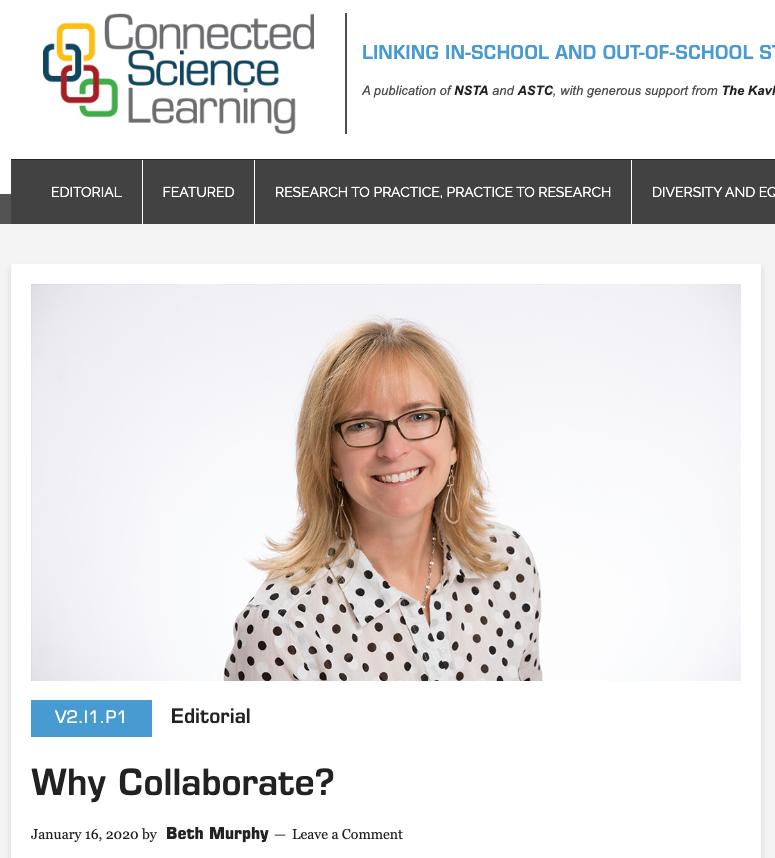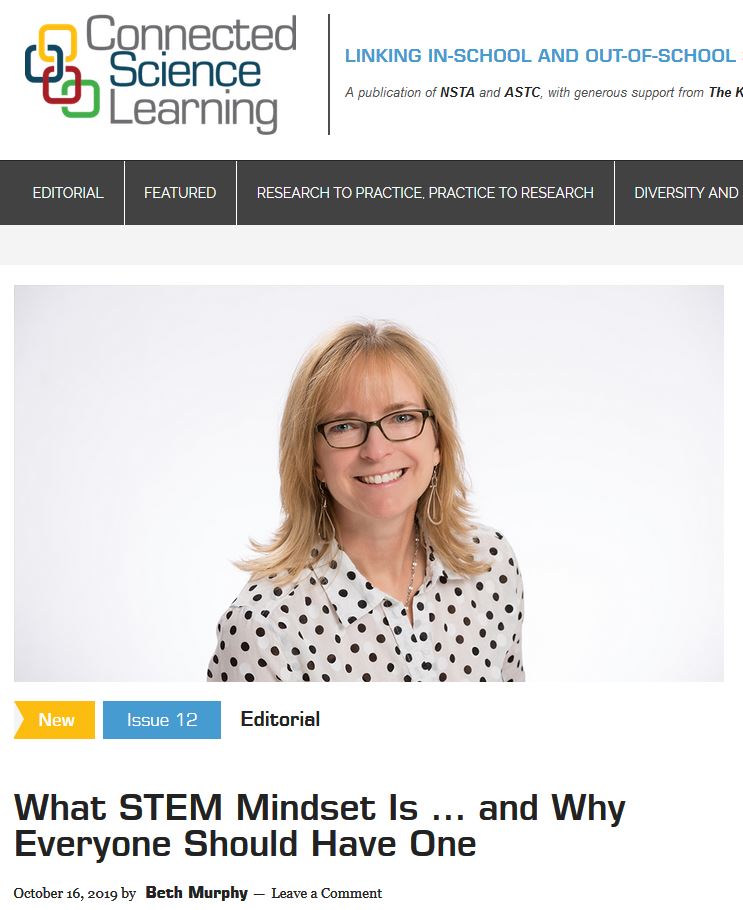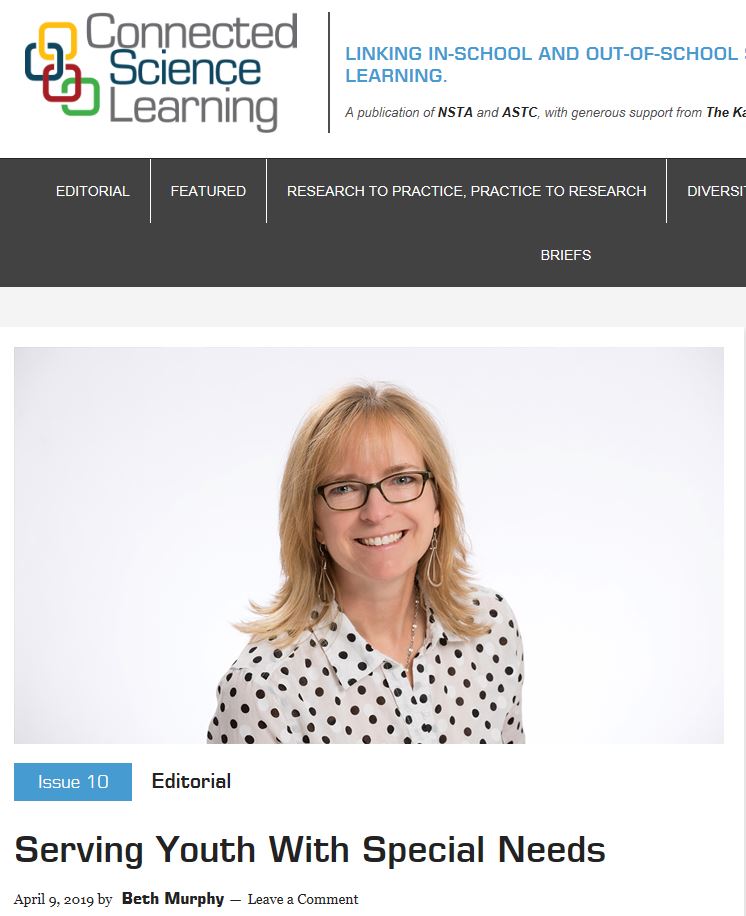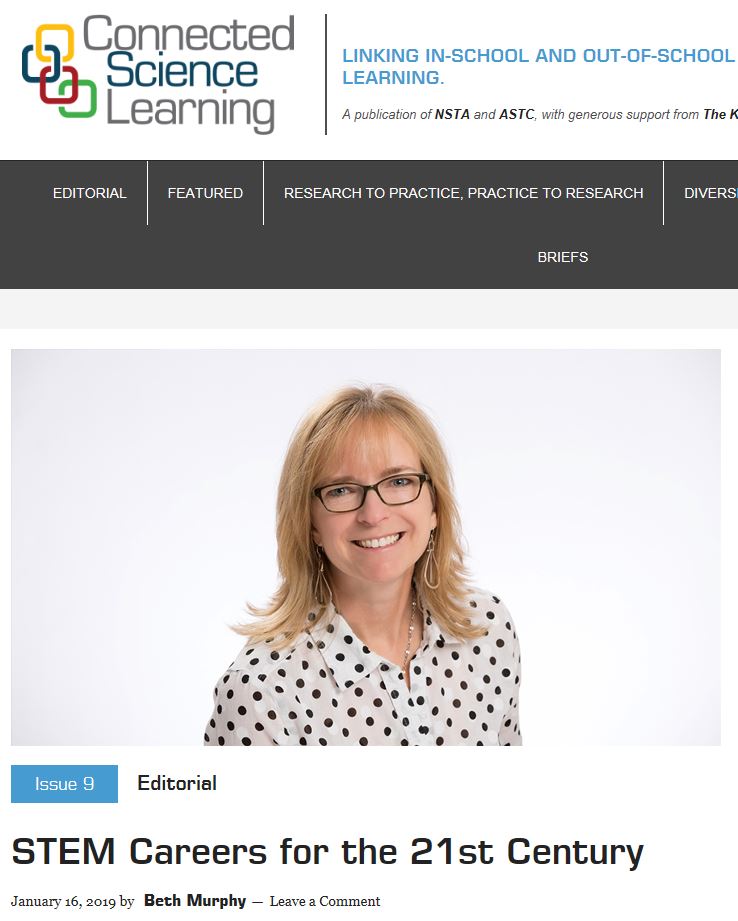“There’s been a lot of focus recently on STEM learning ecosystems and ecologies, recognizing that learning happens everywhere and all the time—in schools, in the community, and at home. Where and when learning can take place has no boundaries, and it is important to recognize the web of opportunity that exists within a community and find ways to strengthen it.”
Connected Science Learning Receives NSF Grant to Provide New Resources for STEM Educators
“Exciting news! NSTA has been awarded funding from the National Science Foundation to convene an expert study group that will help us bring new resources to the STEM education community. This project launches in 2021 and will include a collection of resources for
Transforming Learning With Design Thinking
Design thinking—an approach to innovation practiced by product designers, inventors, and entrepreneurs—is making its way into STEM (science, technology, engineering, and math) learning in and out of school. Many STEM educators are already well-versed in one version or another of the engineering design process. So, you might be wondering what design thinking has to offer that is new and different.
Helping STEM Education Thrive During COVID-19
“The timing is accidental. When we decided that this issue of CSL would focus on connected science learning experiences that incorporate social media and technology, we had no idea that the COVID-19 pandemic was brewing. While many STEM (science, technology, engineering, and math) education programs and schools already use social media, videoconferencing, and other online platforms to provide rich STEM learning
Why Collaborate?
“As a Connected Science Learning reader, you already know that collaboration is what this journal is all about. We strive to publish articles that highlight ways different organizations come together to connect in-school STEM (science, technology, engineering, and math) learning to the world outside the classroom.” READ MORE
What STEM Mindset Is … and Why Everyone Should Have One
“A STEM (science, technology, engineering, and math) mindset encompasses many things, and perhaps does not mean the same thing to every person. Many believe, however, that it combines general attributes that are independent of an individual’s academic and career pursuits with STEM-specific elements. STEM mindset is important for scientists and engineers—it certainly helps them succeed in what they do.
Practical Program Evaluation
“Throughout my career I’ve seen how powerful program evaluation can be when it is done well. For example, a few years back I was project director for a program called STEM Pathways—a collaborative effort between five organizations providing science programming for the same six schools. Much about our program evaluation experience sticks with me: how important it was to involve program
Growing the CSL Community
“In this discussion, Field Editor Beth Murphy, NSTA Executive Director David Evans, and ASTC President and CEO Cristin Dorgelo discuss the origins of Connected Science Learning, and what’s next for the journal. The conversation has been edited for length and clarity.” READ MORE
Serving Youth With Special Needs
“In the STEM (science, technology, engineering, and math) education community, we are well aware that “the representation of certain groups of people in science and engineering education and employment differs from their representation in the U.S. population” (NSF 2017). Included in these underrepresented groups are people with disabilities, whose participation in STEM education and occupations is often impeded by various
STEM Careers for the 21st Century
“Regarding this issue’s theme—encouraging youth to pursue STEM careers—I find myself reflecting on how the definition of a STEM career has changed since I was looking for my first job. When I was a graduate student in physics in the early 1990s, STEM workforce concerns were focused on the supply of PhD scientists and engineers available to conduct research and
- Page 2 of 2
- 1
- 2

